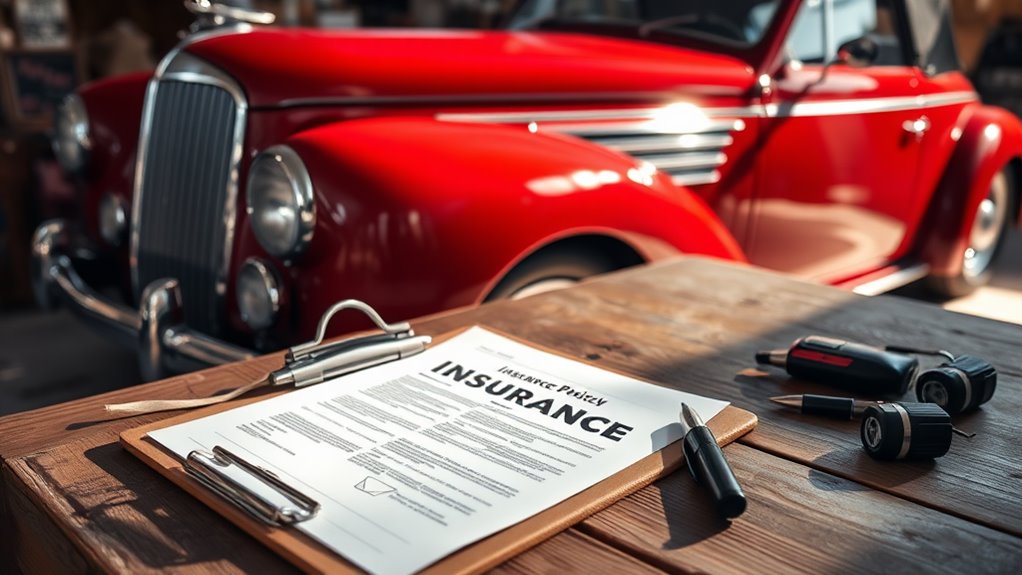When it comes to classic car insurance, understanding your options is essential for protecting your investment. Unlike standard policies, these specialized plans cater to the unique needs of vintage vehicles, often including features like agreed value coverage and restoration costs. However, qualifying for these benefits requires meeting specific criteria. As you explore what's available, consider how these factors impact your coverage choices and your vehicle's long-term value.
When you own a classic car, it's essential to understand that standard auto insurance often doesn't meet your unique coverage needs. Classic cars are typically vintage, antique, or collectible vehicles that require a specialized insurance approach. Unlike standard policies, classic car insurance recognizes the historical significance and unique characteristics of these vehicles, guaranteeing they receive the protection they deserve.
One significant aspect of classic car insurance is the "agreed value" coverage. This means that instead of being insured based on actual cash value—which accounts for depreciation—your classic car is insured for a predetermined amount agreed upon before the policy takes effect. In the unfortunate event of a total loss, this arrangement guarantees you receive the full agreed amount, safeguarding your investment.
Specialized policies cater to various unique needs, including coverage for restoration, exhibitions, and shows. Standard auto insurance may not include these scenarios, leaving you without essential protection during restoration or when showcasing your vehicle. Additionally, since many classic cars are of historical interest, maintaining or even increasing their value over time is often a priority for owners. Classic car insurance supports this goal by offering tailored policies that reflect the vehicle's worth and often includes affordable auto insurance options that are specifically designed for classic car owners.
The low-risk classification of classic cars further enhances the appeal of these specialized insurance policies. Owners usually keep their vehicles in secure storage and drive them infrequently, which lowers their risk profile compared to standard vehicles. Consequently, classic car insurance can be around 30% cheaper than standard auto insurance, reflecting the reduced likelihood of claims. This is largely because insurers believe that classic car owners file fewer claims due to infrequent use and maintenance.
Classic car insurance is often 30% cheaper than standard policies due to their low-risk classification and infrequent use.
In terms of coverage types, classic car insurance can include collision and all-encompassing policies that provide protection based on agreed value. Liability coverage is also standard, offering legal protection against damages or claims from other motorists. Additionally, specialized features like spare parts coverage protect against the theft or damage of rare components that can be difficult or costly to replace.
Eligibility for classic car insurance is determined by several factors. Typically, vehicles must be at least 25 to 30 years old, used for non-primary transportation, and stored securely when not in use. Insurers often require a clean driving record, and strict mileage limits apply to maintain coverage. These criteria guarantee that only well-maintained, lower-risk vehicles qualify for classic car insurance.
While annual costs can range from $200 to $600, various factors influence pricing. The agreed value of your vehicle, your driving history, and tiered mileage plans can all affect your premium. Additionally, many insurers offer discounts for bundling policies or for active membership in classic car clubs.
Conclusion
In conclusion, classic car insurance coverage is essential for safeguarding your vintage vehicle's value and uniqueness. With tailored options like agreed value coverage and restoration support, you can drive with peace of mind. Don't overlook the benefits of a policy that not only protects your investment but also enhances your ownership experience. Choosing the right coverage can feel like finding a needle in a haystack, but it's absolutely worth it to guarantee your beloved classic remains safe and sound.

